Struggling to keep your bonsai tree thriving? The ancient art of bonsai transforms nature into miniature living sculptures. This guide promises to demystify the process, offering you step-by-step advice on growing and caring for these captivating trees.
Unlock the secrets of bonsai and watch your tiny forest flourish!
Key Takeaways
- Bonsai is an ancient art where small trees are grown in containers to create miniature landscapes.
- Caring for bonsai involves pruning, wiring, and providing the right soil, water, and light conditions.
- You can start a bonsai from cuttings, nursery stock or seeds, each method requiring different levels of care.
- Bonsai styles include Chrysanthemum and Dwarf forest; each has its own unique aesthetic appeal.
- Indoor bonsai needs proper lighting and humidity while outdoor bonsai benefits from natural weather but must be protected.
Definition and History of Bonsai
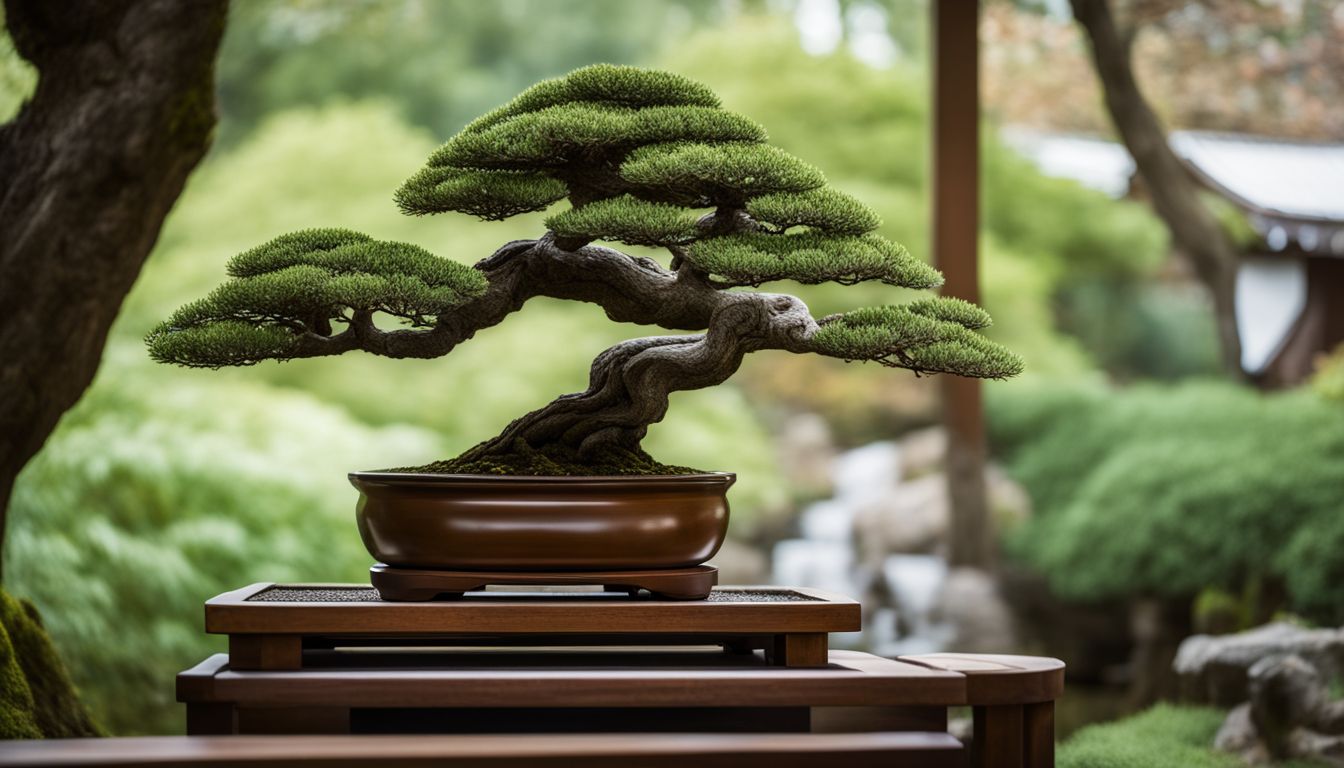
Bonsai, a traditional Japanese art form, involves growing and cultivating miniature trees in small containers. The practice of bonsai dates back to ancient China and Japan, with early versions focusing on creating naturalistic landscapes in small scale.
In modern times, bonsai has evolved into various styles and techniques for shaping and maintaining these tiny trees.
Early Versions and Classical Period
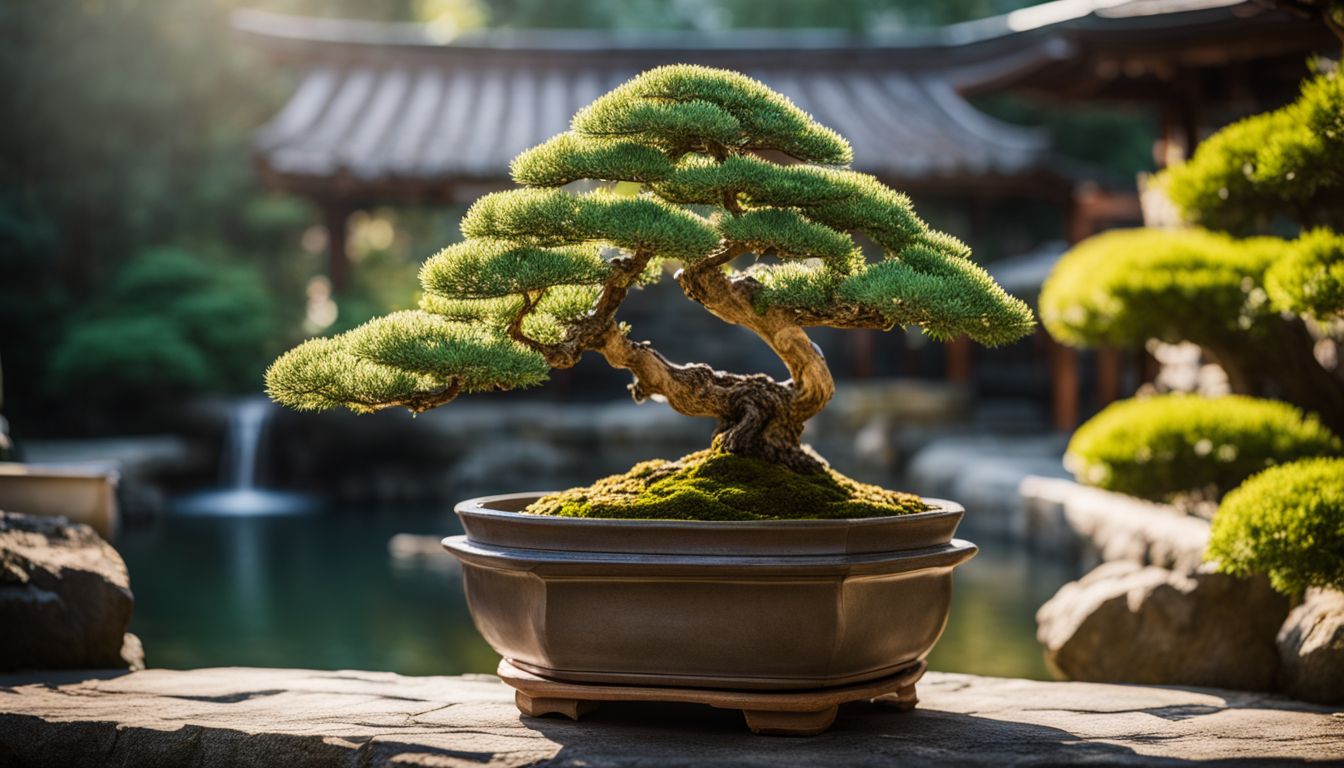
The art of creating miniature trees began with the Chinese practice of penjing. This tradition shaped living trees and plants into small landscapes, capturing the essence of nature’s beauty.
Over time, tree pruning and shrub cultivation developed as crafts, laying the groundwork for what would become bonsai.
Japanese gardeners took inspiration from penjing and brought their own vision to the craft. By refining techniques and styles, they transformed simple plant shaping into a sophisticated art form known as bonsai.
These early versions set the stage for classical Japanese gardening, which celebrated harmony and balance in miniature tree design.
Modern Bonsai

Bonsai trees today blend ancient traditions with new techniques. People still appreciate these miniature trees for their beauty and the challenge they offer. Modern bonsai is all about creativity and expression, while staying true to its roots in penjing and Zen Buddhism’s influence.
You can start your bonsai journey using different methods like buying nursery stock or collecting small trees from a forest. These methods save time compared to growing from seeds.
Mastering pruning and wiring techniques helps shape your bonsai into stunning forms. The final touch comes when placing them in formal bonsai containers, often beautiful ceramic pots that enhance their elegance.
Caring for modern bonsai means embracing the Wabisabi philosophy of finding beauty in imperfection. It also involves learning about water needs, soil types, and how much light each tree requires.
Bonsais demand patience but reward you with living sculptures that breathe peace into any space.
Cultivating and Nurturing Your Bonsai Tree

Once you have your bonsai tree, it’s important to know how to care for it. This includes learning about the different material sources, techniques for care, and how to start a bonsai tree from seed.
Material Sources
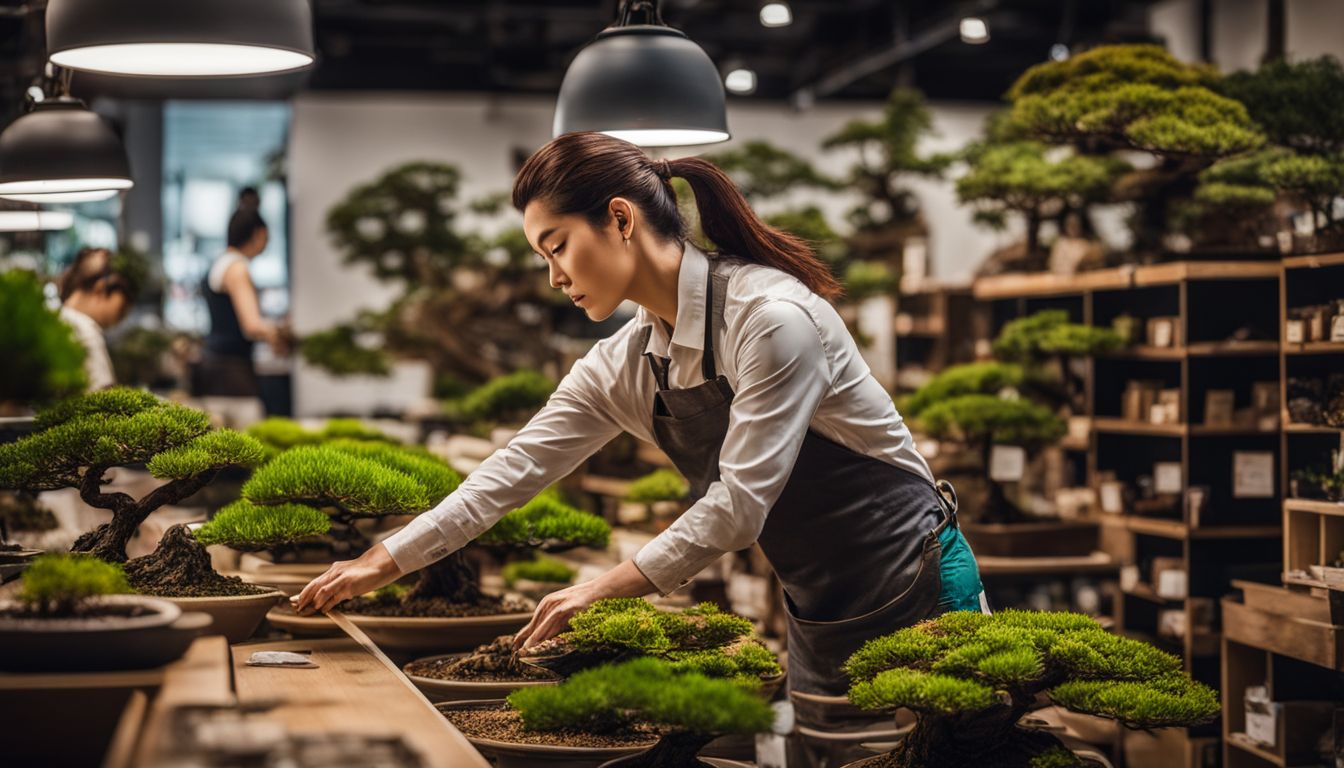
You can start your bonsai journey with various types of materials. Cuttings or layering from a mature tree are popular methods. You might also choose nursery stock, which is young plants already started for you.
For a more unique bonsai, some enthusiasts find wild trees to train into the art form. Commercial growers specialize in bonsai-ready plants as well.
Equipment for cultivating and caring for your bonsai tree is easy to get. Worldwide suppliers offer everything from specialized pots to Japanese Akadama clay for soil. Whether you need tools or decorative elements, an array of options awaits you in stores and online marketplaces catering to bonsai enthusiasts.
Keep these resources in mind as we explore techniques for caring and styling your tree next.
Techniques for Care

Now that you have your bonsai tree and the necessary materials, it’s crucial to understand the techniques for care. Bonsai maintenance involves regular pruning to maintain its shape and encourage new growth.
Utilize specialized bonsai pruning tools such as concave cutters and knob cutters to ensure precision in shaping your tree. Additionally, wiring is a technique used to guide branches into a desired position, giving your bonsai an aesthetically pleasing form.
It’s important to monitor the wire carefully so it does not hinder growth or damage the tree.
To further nurture your bonsai tree, consider grafting which allows you to combine different species on one rootstock, creating unique foliage patterns or enhancing specific characteristics of your bonsai.
Starting a Bonsai Tree from Seed

Transitioning from caring for a bonsai tree to the delicate process of starting one from seed requires precision and commitment. Germinating bonsai tree seeds involves creating optimal conditions, such as using well-draining soil and maintaining consistent moisture levels.
Different species may have specific requirements for germination, including exposure to light or darkness and varying temperatures. Nurturing the seedlings demands attentiveness; regular watering and proper ventilation are crucial to prevent mold growth.
Gradually shaping the young bonsai tree involves meticulous care. From pruning to wiring, applying these techniques ensures that the miniature tree grows in the desired style while maintaining its health.
Aesthetics and Styling of Bonsai Trees
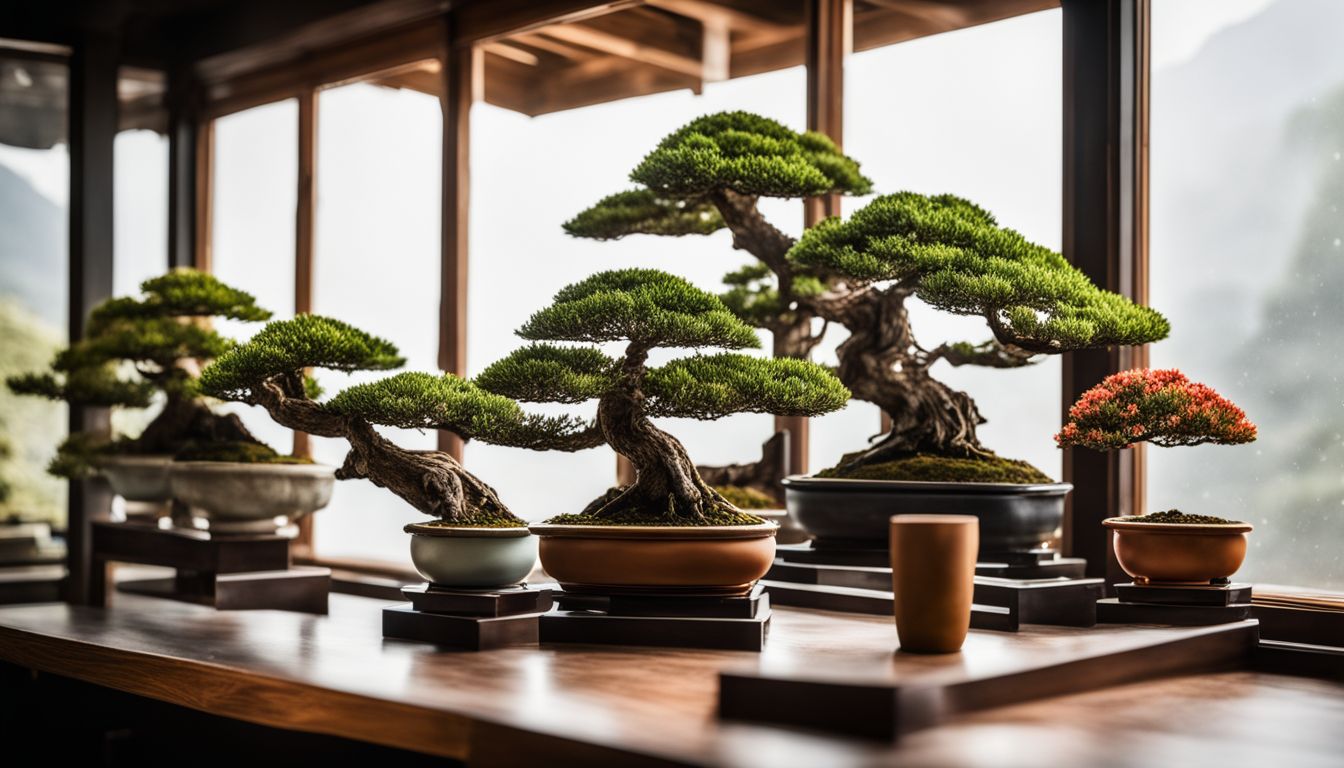
Explore the different styles of bonsai trees and how they are displayed in various containers to enhance their aesthetic appeal. Learn about the art of shaping and styling bonsai trees to create stunning natural sculptures.
Display and Containers
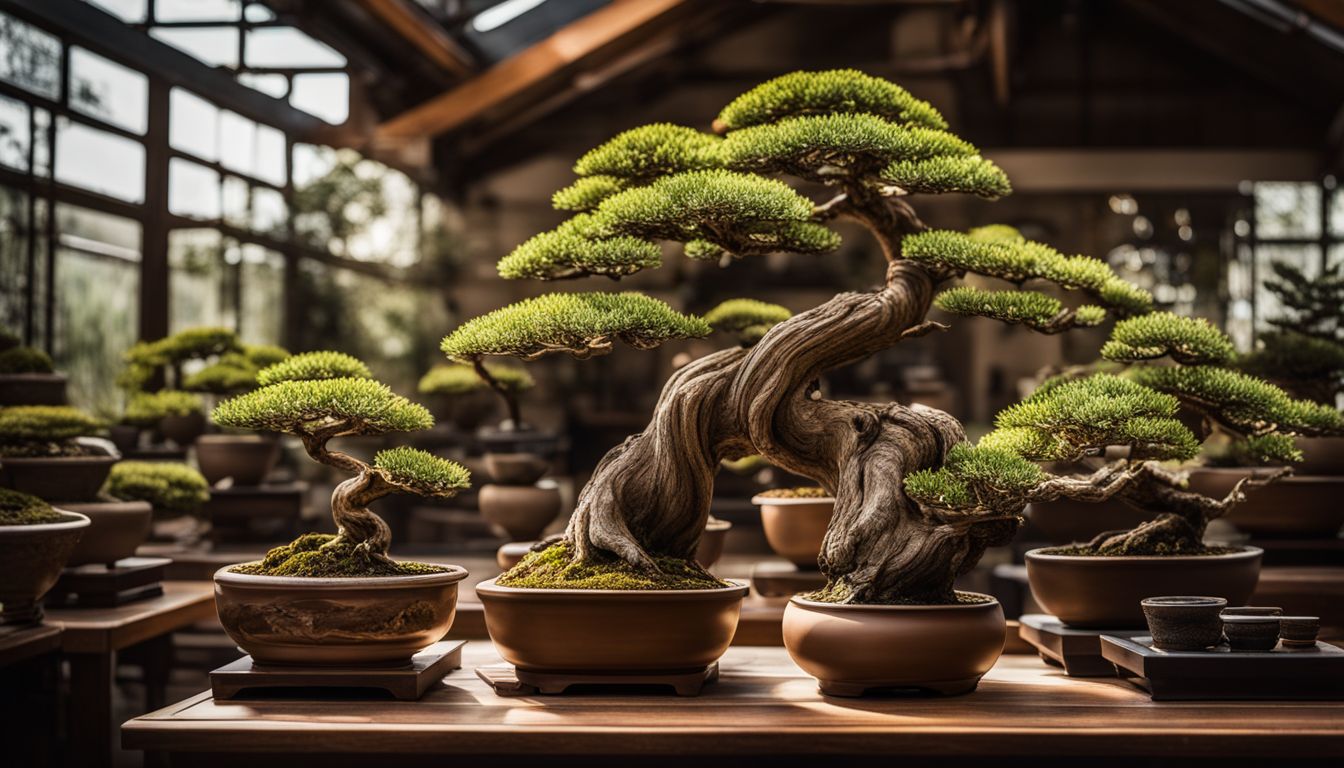
Bonsai trees should be displayed to accentuate their “front” and showcase their key features. When presenting a bonsai, ensure that the front of the tree is easily visible and appreciated.
Bonsai are typically showcased in formal containers, such as ceramic pots with drainage holes. The containers play a crucial role in enhancing the overall aesthetics of the bonsai, complementing its style and providing necessary support for growth.
Bonsai exhibitions often feature multiple trees on display, offering viewers an opportunity to appreciate various designs at once. These displays are commonly seen in bonsai competitions where numerous trees are arranged indoors for temporary viewing.
Various Bonsai Styles
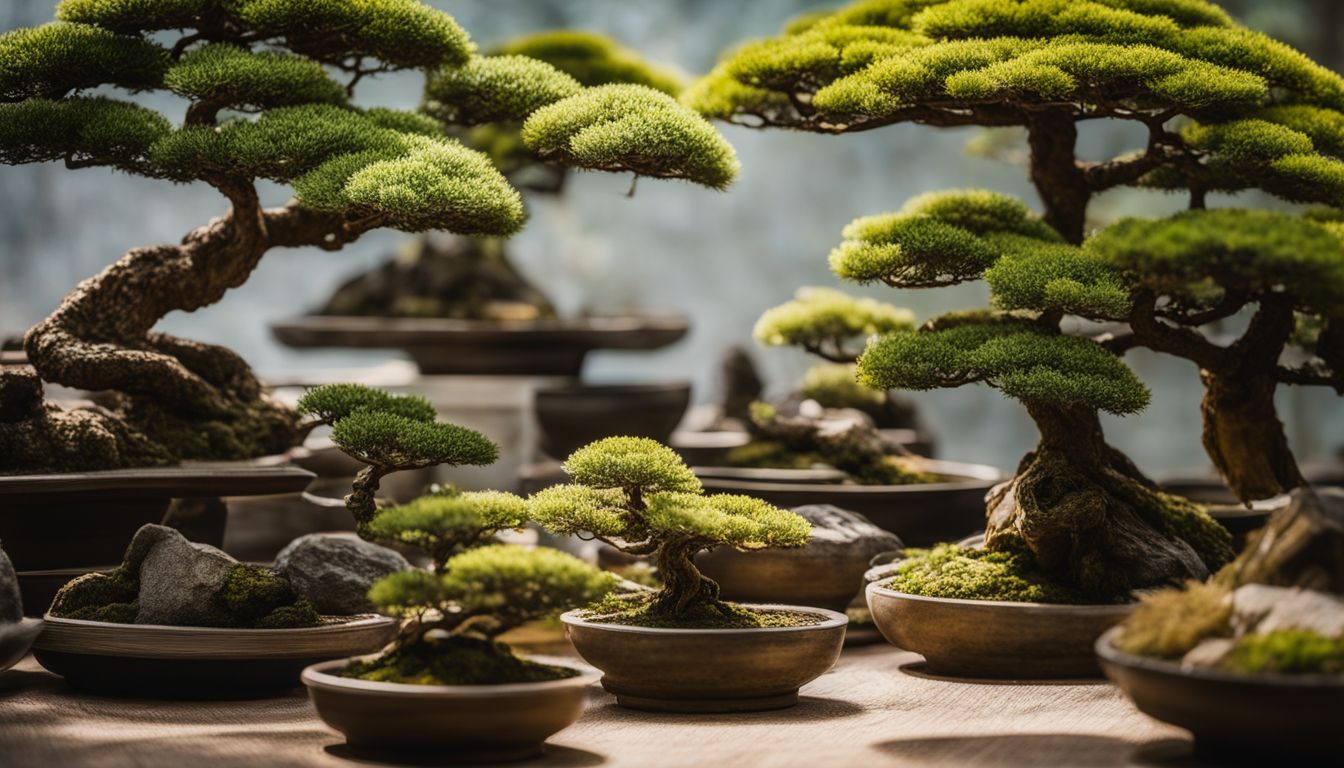
Bonsai trees can be styled in various ways, such as the Chrysanthemum bonsai, which features a single tree with curved and cascading branches resembling a chrysanthemum flower. The Dwarf forest style creates the illusion of a mature forest on a small scale by planting multiple trees close together.
Kokedama, or moss ball bonsai, involves suspending the plant’s root system in a soil mixture covered with moss. On the other hand, Kusamono focuses more on accent plants placed near bonsai trees to enhance their overall aesthetic appeal.
Each bonsai specimen may exhibit characteristics of different styles, blending artistic cultivation techniques like landscape design and aesthetic pruning. Japanese tradition employs commonly understood named styles that guide designers in shaping these miniature trees to reflect harmonious natural and cultural elements within Japanese horticulture and Zen gardens.
Understanding Bonsai Size Classifications
 Bonsai size classifications categorize trees into groups based on their height and overall dimensions. The categories range from the larger, more imposing bonsai to the tiny, delicate miniature bonsai.
Bonsai size classifications categorize trees into groups based on their height and overall dimensions. The categories range from the larger, more imposing bonsai to the tiny, delicate miniature bonsai.
Japanese bonsai exhibitions employ specific size classes to label individual bonsai specimens, showcasing the varied sizes within the art form.
Appreciating the art of bonsai involves grasping these size classifications as they play a fundamental role in conveying the aesthetic and visual impact of each tree. Bonsai enthusiasts and experts globally are devoted to comprehending and utilizing these size categories, enhancing their understanding of this ancient horticultural tradition.
Indoor vs. Outdoor Bonsai: What’s the Difference?
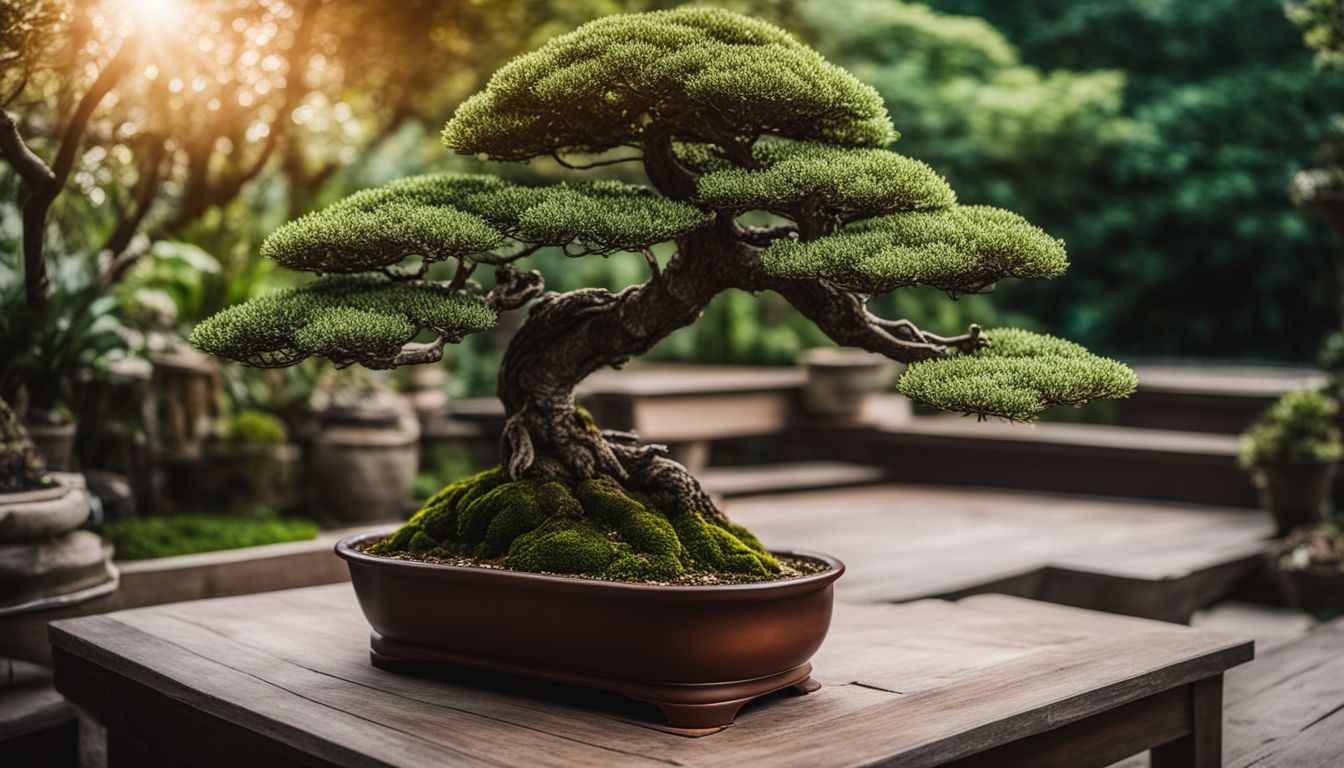
Indoor and outdoor bonsai trees have distinct care requirements. Indoor bonsai trees need suitable lighting and humidity levels for optimal growth, whereas outdoor bonsai trees rely on natural light and air circulation.
Cultivating indoor bonsai trees demands attention to maintaining proper temperature and humidity control. In contrast, outdoor bonsais are more exposed to environmental changes.
When growing indoor bonsai, it’s crucial to provide the right conditions that mimic their natural habitat – this includes regulating temperature and ensuring adequate sunlight exposure.
Conversely, outdoor bonsais require protection from harsh weather conditions but benefit from the natural elements for their growth. Understanding these differences is essential in nurturing healthy indoor and outdoor bonsai varieties effectively.
Conclusion

In conclusion, mastering the art of bonsai means understanding its rich history and diverse styles. A focus on practical techniques like pruning, wiring, and styling can yield efficient and visually striking results.
How will you apply these strategies to your own bonsai trees? Embracing bonsai cultivation can lead to a rewarding impact in both aesthetics and horticulture. Seek out further guidance from expert resources for continued learning and growth in this unique art form.
